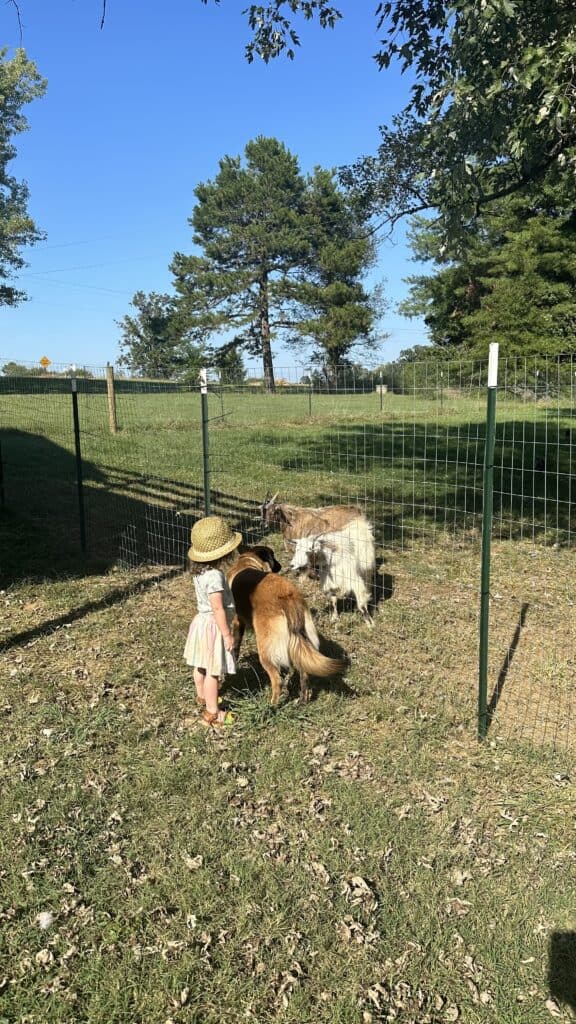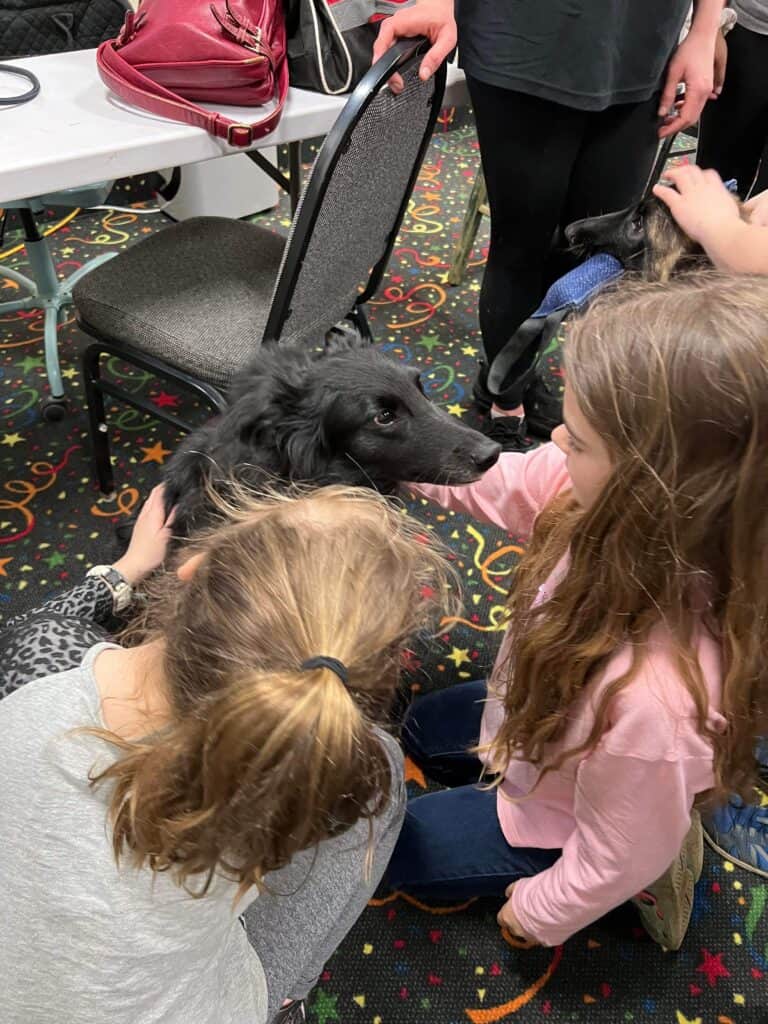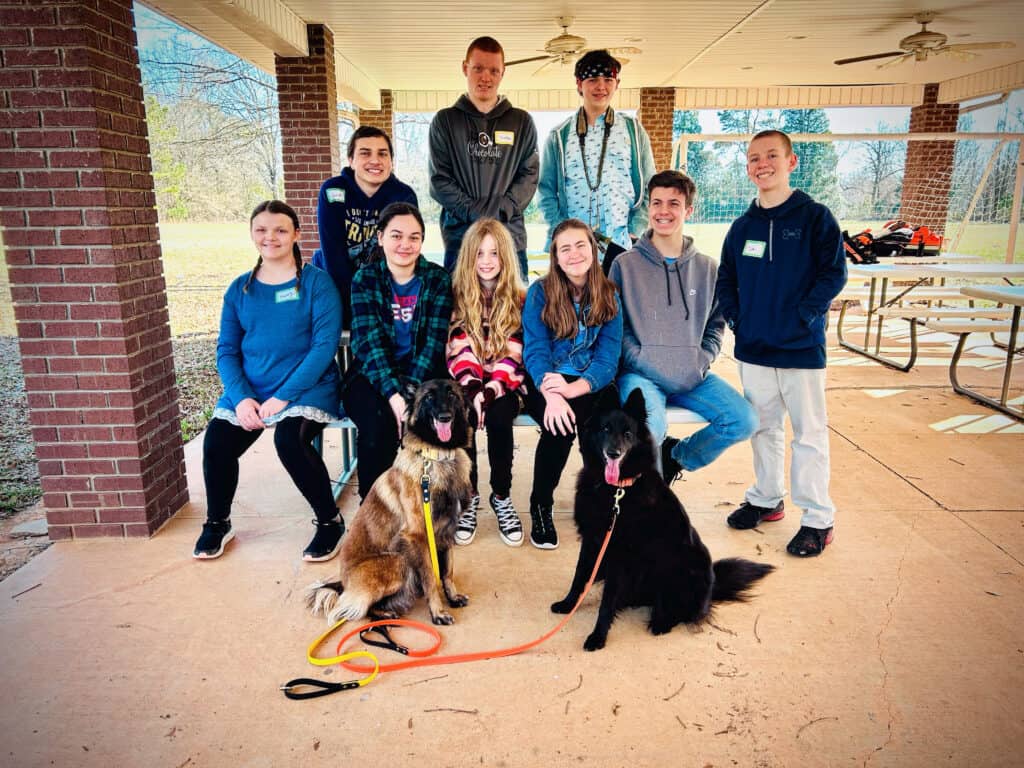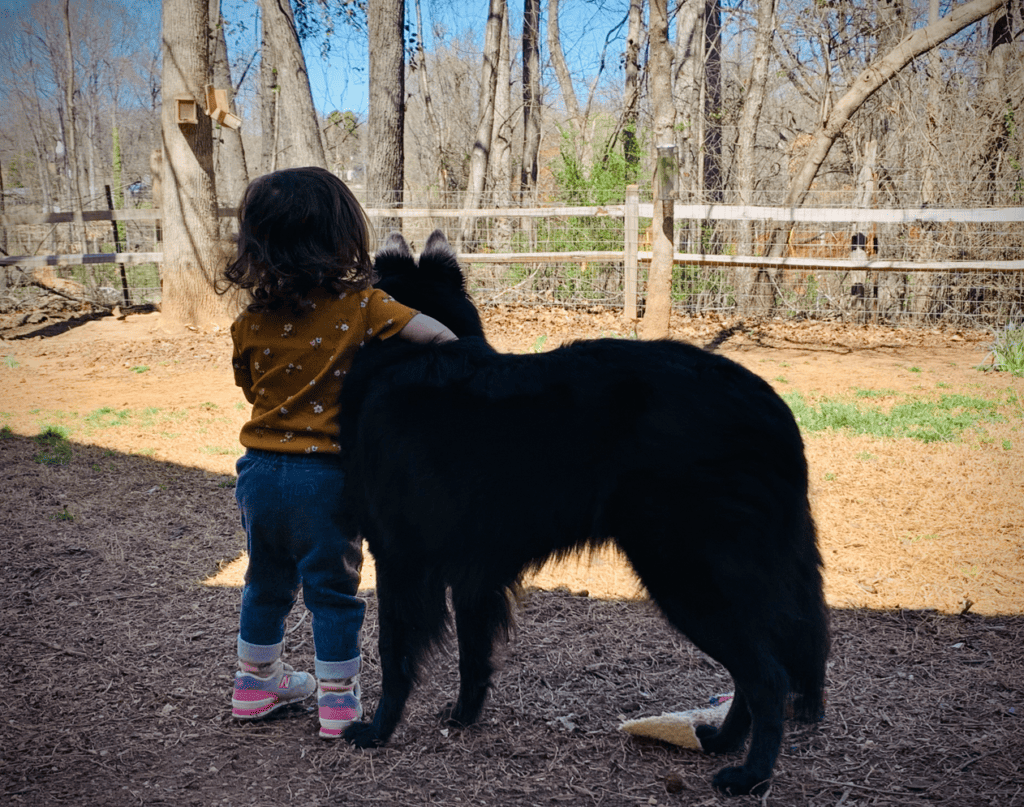If you are a parent, you are likely excited at the prospect of your children sharing meaningful interactions with your family’s dog. You may even be considering purchasing or adopting a pup for your family, but aren’t certain how to get your child involved in training activities.
Regardless of your child’s age, there are many ways to include them in dog training efforts, and you may be surprised by how early your child can become involved in many popular dog sports and other types of training. Whether you are working to establish a strong bond between your dog and your child, or you have a child who loves dogs and is taking the initiative to become involved with training on their own, this article will provide a variety of easily implementable options.
Early positive experiences with animals have been proven to have a number of positive impacts on children, some of which include helping children learn more quickly, providing therapeutic comfort, decreasing a child’s risk of certain allergies, increasing a child’s desire to be more physically active, improving social skills and confidence, helping to teach responsibility and more. This being said, it is important to always prioritize safety first and foremost. If your dog is not already comfortable with your child, or your child is small and your dog is large and enthusiastic, you should work with a qualified trainer or behaviorist prior to attempting any of the options listed below.
The following information is categorized by age, as older children will likely be able to participate more independently than younger children; however, remember to use your discretion when deciding which dog training activities to allow your child to participate in. Maturity, confidence around your dog, the ability to respect your dog’s boundaries and the ability to accurately follow instructions are imperative to keep children (and your dog) safe during these interactions. In the case of very young children, it is never completely safe to allow them to interact with your dog unattended. Even in cases where a dog is friendly and has never demonstrated any indications of aggressive behaviors towards your child, adult supervision is always advisable.
What are the benefits of getting your child involved in dog training?
As previously mentioned, there are a number of benefits to getting your child involved in dog training, and interactions with animals in general have proven to have a number of benefits for kids. For instance, a number of studies conducted over a significant period of time – from the early 2000s, through to recently – have all demonstrated that exposure to dogs and cats within the early years of life decreases a child’s risk of asthma and a variety of allergies.
Dogs have also been shown to decrease anxiety in children, decrease the probability of children developing developmental delays, decrease cortisol levels and other stress related indicators. A meta-analysis published in 2019, which included over three million participants, demonstrated that exposure to dogs actually decreases blood pressure, and reduces all-cause mortality rates by 24% and cardiovascular related deaths by 31%.
Learning to train dogs can teach children to understand the power of positive reinforcement and motivation, can help teach effective communication and patience, and can demonstrate to children how small steps can achieve large results.
0-4 Years

If you have a child who is between the age of 0-4 years old, they may not be able to do a lot of training on their own. This being said, there are plenty of ways that you can get them involved!
Even for babies, regular exposure to dog in a positive manner can help them understand dog body language and how to safely interact with dogs as they get older. Some ideas for getting your baby or toddler comfortable around your dog are:
- Take them on walks together. You can wear your baby or train your dog to walk alongside a stroller. If your dog enjoys walks, this activity will help them associate your baby with something fun, while also providing enrichment and exercise.
- Train your dog with your child nearby. If you have a baby, you can set them up on a slightly elevated surface such as a crib or rocker for this activity. If you have a toddler, they can sit on the furniture or stand close to you. You could further their involvement by having them hand you the treats that you will use for training.
- Child can ask the dog to perform simple cues that they already know. For older toddlers, you can have them practice asking your dog to perform simple obedience cues that the dog already knows. In order for this to be effective, your toddler will need to possess the ability to clearly communicate cues, while also understanding that treats must be delivered closely after the dog correctly exhibits the desired behavior. It is also important that toddlers are comfortable delivering treats in a calm, confident manner.
4-9 Years

- Incorporating cues into your dog’s feeding schedule. If the risk of your dog enthusiastically bowling your child over is low, you can begin having your child deliver their food. Before your child sets your dog’s food bowl down, they can ask your dog for a simple, known cue such as a sit or a down.
- Child can ask the dog to perform simple cues. Your child can practice engaging your dog in short training sessions, where food-based positive reinforcement techniques are used to reward the dog throughout these sessions. You may need to work with younger children to teach them about reinforcement timing, and ensuring that the dog is in the correct position prior to delivering treats. It is best to supervise children until you are confident that they can safely and effectively work with your dog.
- Child can use the luring technique to teach a dog new behaviors. If you have an older child who is calm and confident interacting with your dog, they can begin teaching your dog new behaviors such as stationing, leave-it, heel or recall. Younger children may be more comfortable teaching behaviors like sit, down or spin. Before allowing your child to work with your dog on new cues, ensure that they can successfully ask your dog to perform behaviors which they already know and can reinforce properly.
- Child can accompany a parent to a group obedience class and observe or help where appropriate. Group classes have a variety of benefits, but helping your child learn the basics of dog training is one of them. If your child is interested in training your dog, explain this to your instructor and ask if it would be possible to have your child accompany you to class.
9-18 Years

- Child can use the luring technique to teach dog new behaviors such as trick training. Older children and teenagers with some previous dog training experience may enjoy teaching your dog complex behaviors, such as tricks. Books such as 101 Dog Tricks, or YouTube, are great places to start learning the basics of trick training.
- Child can become a junior handler. In AKC, children over the age of nine through 18 years can compete in a variety of AKC dog sporting events as junior handlers, or in “junior showmanship”. Allowing your child the opportunity to compete as a junior handler can be very rewarding and can motivate them to go over and above with training endeavors. Some sports in which children can pursue junior showmanship include Conformation, Obedience, Rally Obedience, Agility, Tracking, Hunt Tests, Herding, FastCAT, Lure Coursing, Scent Work, Earth Dog and more. If your child is serious about dog training and is interested in pursuing junior showmanship, classes are available for them to begin learning.
- Child can join programs such as 4H. 4H is another great avenue for children to become involved in dog related activities and dog sports. 4H offers obedience classes specifically for children, alongside other programs, and will oftentimes have opportunities for children to compete in events such as state fairs.
- Child can play hide and seek games with your dog. Dogs have incredible olfactory systems, and they love to use their noses. Many kids find a great deal of enjoyment in teaching dogs how to search for them. Children can play hide and seek in the house or in a secure backyard. If they want to reward your dog once they are found, have them bring treats or a toy which they can provide once they are found. They might also find it fun to enthusiastically praise the dog when found – just make sure that your child always respects their personal space and does not engage with your dog too roughly.
- Child can create enrichment activities for your dog. If your child enjoys crafting, one activity which they may really enjoy is creating enrichment activities for your dog to do. It is possible to make snuffle mats, stuff toilet paper rolls with paper towels or fabric and treats, create activities out of boxes, or even put together an agility course using cones, PVC piping and other easily obtainable materials. They may also enjoy teaching your pup how to play the treat hiding game and then hiding treats around the house for them.
- Child can join a dog training class. If your child is just getting started in dog training, they will likely enjoy joining a dog training class designed specifically for kids. Programs such as AKC Canine Clubs or our Kids and K9s program are fantastic, well-rounded class options for kids who are interested in learning more about how to work with dogs.
In conclusion
There are many options for getting your child involved in dog training. Depending on their age and interest level, options range from casual learning to more invested options such as pursuing junior showmanship.
It is always important to remember that safety comes first anytime a child is interacting with an animal, and that it is important to select activities which will remain safe and fun for your child and your dog. For a comprehensive introduction to dog training and behavior, check out our Kids and K9s program!

